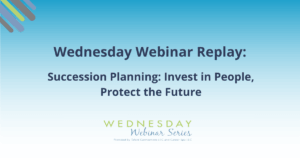One challenge remains constant for Talent Acquisition (TA) leaders everywhere: scaling their workforce efficiently to meet evolving talent needs. As hiring demands shift, many organizations are exploring how to structure their talent acquisition strategy to maintain agility and responsiveness. Talent Connections, LLC recently held its quarterly Talent Acquisition Leaders’ Forum, hosted at Newell Brands, where some of Atlanta’s brightest TA leaders came together to tackle these challenges head-on and shared critical insights for building a competitive and flexible TA function.
The exclusive forum, moderated by Newell Brands’ Head of Global TA, brought together a diverse panel of experienced TA leaders. The conversation focused on the need for an agile approach to TA, mainly as hiring needs fluctuate more frequently across industries. Here’s what we learned.
Structuring for Agility in Talent Acquisition
A central theme that emerged was the importance of building a TA team that can quickly adapt to changing hiring demands. Leveraging external partnerships, such as Recruitment Process Outsourcing (RPO), to manage recruitment across multiple regions can help free up much-needed resources and time. This allows companies to adjust their internal team size based on the volume of work without overcommitting resources. “Flex recruiters” present another solution, being able to shift between departments depending on demand, ensuring that resources can be allocated where they are needed the most. These flexible models help companies remain efficient during high and low-volume recruitment periods, with some companies keeping contract recruiters on standby to scale up during peak times.
Recruiter capacity also must align with the complexity of roles. For instance, high-volume roles like call center positions may require fewer recruiters than specialized roles such as corporate finance or executive positions. By tailoring the recruitment strategy to fit the complexity of the roles, organizations can ensure both efficiency and the ability to meet varying demands.
Remote and Hybrid Work in Talent Acquisition
The shift to remote and hybrid work models has significantly impacted TA teams. Many companies operated primarily in-office pre-pandemic, but the shift to remote work has proven highly productive for recruiters in their local geographies. Some organizations have embraced a remote-first approach with recruitment, allowing teams working across different regions to come together in person occasionally but remaining primarily remote. This model enables teams to collaborate effectively while enjoying the benefits of remote work, such as increased productivity.
Others have adopted hybrid models where contractors and full-time employees are dispersed across states but come together for regular offsite meetings. While hybrid work has become the norm, maintaining personal connections provides opportunities for collaboration and a sense of team unity.
Fostering Team Culture in a Hybrid Environment
Building and maintaining a strong team culture is challenging when team members work remotely or even in hybrid environments. To create a sense of unity, some organizations have implemented unique initiatives that allow team members to bond over shared experiences. For instance, activities centered around personal stories have helped teams feel more connected despite the physical distance.
Treating contract workers and recruiters as integral team members is essential to maintaining a cohesive culture. By embedding contract recruiters into the company’s culture and business goals, organizations can ensure that full-time and contract employees are aligned with their objectives, leading to better performance and engagement.
Frequent team meetings are also essential to keep everyone on the same page. By holding regular discussions about metrics, progress, and engagement, remote teams can stay connected and avoid feelings of isolation, which can be all too common in virtual work environments.
Balancing RPOs and Contract Recruiters
Using RPOs and contract recruiters allows organizations to manage fluctuating hiring demands. However, each model has its pros and cons. RPOs are often beneficial for managing lower-volume or transactional hiring, but they require close management to ensure alignment with company culture and processes. Contract recruiters, on the other hand, offer more flexibility, allowing companies to adjust their recruitment capacity based on immediate needs quickly.
While RPOs are well-suited for high-volume, transactional roles, they can struggle to engage candidates in more relationship-driven or specialized positions. An in-house team or contract recruiters may be more effective for roles requiring deeper engagement and personal relationships.
Final Takeaways
The Atlanta Talent Acquisition Leaders Forum offered valuable insights into how organizations can build agile and effective talent acquisition strategies. TA leaders must focus on adaptability, maintaining flexibility in staffing models, and fostering team cohesion, especially in hybrid and remote work environments. By leveraging a combination of internal teams and external resources and ensuring alignment with overall business goals, companies can create a talent acquisition function that is both responsive and resilient in the face of shifting workforce demands.
This forum is by invitation only and is exclusive to corporate talent acquisition leaders of mid-sized and large companies in Atlanta. If you are a TA leader in the Metro Atlanta area and want to join our next forum, contact me at teelajackson@talentconnections.net for more information.




